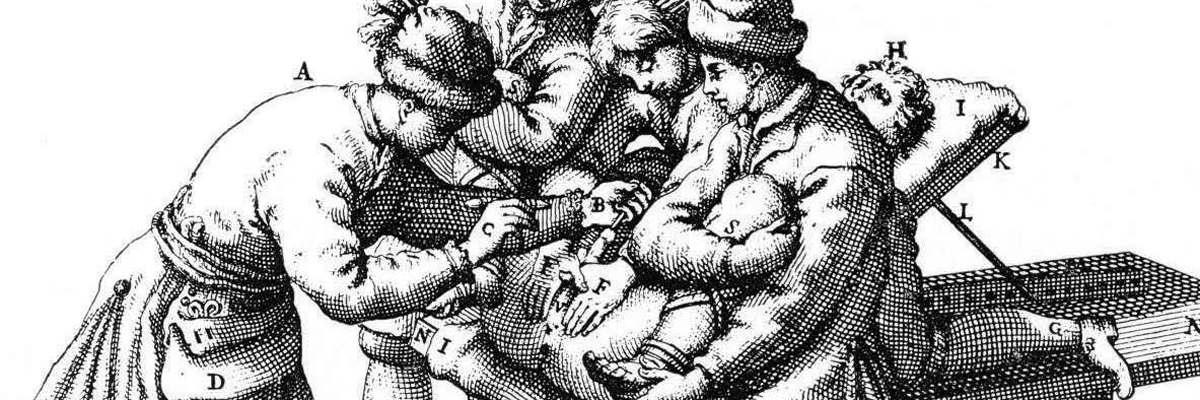
Cutting for the stone was probably the earliest operation performed in an attempt to relieve the human body of pain. Contrary to trepanation and circumcision, which were undoubtedly older incisions, lithotomy was free of any religious background.
Opening the bladder via the perineum to remove a bladder stone was practised by the ancient Hindu surgeons, the Greeks, Romans and the Arabs.
Among the Hippocratic physicians of the fifth and fourth centuries B.C. the symptoms of renal and vesical calculi were well known, since the Hippocratic oath refers to the treatment of stone patients: “…I will not covet persons labouring under the stone, but will leave this to be done by men who are practitioners of this work.”
One of the oldest urological documentations described a bladder stone dating back to 4800 B.C. which was found in the grave of a 16-year-old boy near El Amrah in Northern Egypt. The stone was presented by G. Elliott Smith to the Museum of the Royal College of Surgeons of England in 1901 and was described in detail by S.G. Shattock in 1905.
The stone which was broken during excavation was estimated to have been about 6.5 cm in diameter. Chemical examination showed that it was composed of calcium phosphate and uric acid. No oxalate was found. The ancient stone was destroyed during a bomb attack in World War II.

